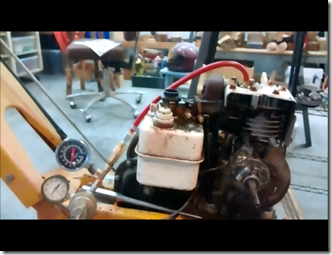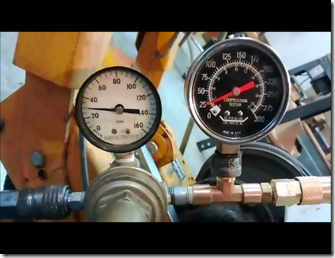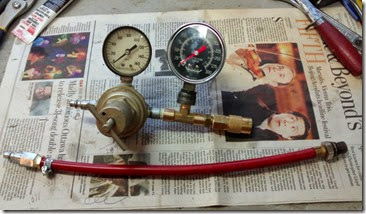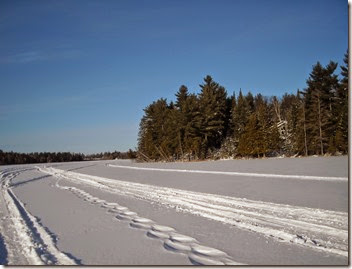Like most of you, I expect, I am enamoured of the choices available through online shopping. However I have always been a bit reluctant, especially when it comes to clothing and similar items, to pay my money ‘on spec’, for a product sight unseen. While most vendors try hard to accurately describe their offerings, in my opinion nothing compares to a comprehensive review by an actual user, so when vendors reach out and ask me to review one of their products I am always happy to do so as long as I can share my observations, both good and bad, with others who may be considering a purchase.
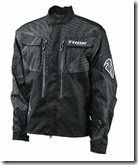
Just before Christmas
Motorcycle House asked if I would review one of their jackets. I agreed and the Thor Phase jacket arrived by post a few days ago.
Please note that this is not going to be an in-use review as it’s currently about –25C outside and the ground is covered by a foot or more of snow. Instead I’ll just deal with the 3 Fs - fit, features, and first impressions – but in reverse order.
First Impressions.
I really liked the looks of this jacket when I opened the package. The gray striping gives it a classy appearance and the brand logos, while obvious, aren’t so blatant as to be distracting. It looks like a motorcycle jacket but could easily be worn as a casual jacket as well.
Although it is made of a heavy-duty 600-denier nylon it is also very light, tipping the scales at just 2 1/2 pounds. That’s about the same weight as my mesh jacket and significantly lighter than my other riding jackets. Partly that’s due to the fact that there is no armour in the jacket. There is also no provision to be able to add armour, which is likely not an issue for most riders but if you intended to wear it for some aggressive off-road riding it could be a factor.
Features.
The jacket has 2 side pockets and 2 breast pockets, all of which are decent sizes. There’s a small pocket on the sleeve with a clear window that could be used for something, although I’m not sure what – a ski pass? There’s also a small
“internal fleece-lined audio pocket” which, at 5” X 3” isn’t large enough to hold very much; my cell phone, which is also my audio device, wouldn’t fit, let alone a wallet, or a pair of glasses. There is a large back pocket as well, which I’ll get to in a minute.
The nylon outer shell is supposed to be water repellent but without wearing it in the shower I can’t confirm how water repellent it really is. However water repellent jackets tend to get hot (especially black ones) and this jacket has some very large vents front and back that should funnel cool air around the body quite nicely (as long as it isn’t raining).
On really hot days you can zip off the arms, converting the jacket into a vest. The separated arms can then be stowed in the back pocket.
One feature I really liked is the rear cargo pocket that allows you to transform your jacket into a

fanny-pack. Simply turn the pocket inside out and stuff the jacket into it. It even has a strap so you can fasten it around your waist and carry/wear it rather than simply leaving it draped over the seat of your bike or fumbling with a jacket lock. “This is cool”, I thought, until I tried it. The attached strap, at maximum extension, will only fit around a 34” waist. That leaves me out along with all of my friends and pretty much anyone who would wear a size large of anything. The jacket is also a very tight fit in the pocket, so there isn’t room to slide your gloves in there as well. In both cases another couple of inches would make a big difference. (Yes, yes, I know.)
Fit.
At 6’ 1” and 165 pounds I have a thin build, generally taking a medium-tall size in jackets, if I can find them. Since tall sizes are almost non-existent in motorcycle gear I usually opt for a large to give me the sleeve length and body length I want, and accept a slightly roomier torso than I need. So I ordered a large.
The body size was fine, with lots of space for an extra sweater or heated vest or what have you, but the overall length was more suited to someone in the 5’9” to about 5’11” height range. For me the sleeves are about 2” too short, ending above the wrist bone. Likewise the body fit more like a short jacket than what I would consider a normal motorcycle jacket length. Even for a regular size both dimensions were shorter than I expected.
I generally like the
Motorcycle House product line and especially products from their sister company,
Viking Bags (which I have reviewed
here and
here) so I was disappointed in this jacket. As a light riding jacket it has lots going for it although silly manufacturing shortcuts (like a too-short waist strap and a too-small inside breast pocket) are unnecessary irritants. And even though the Phase jacket is positioned as
“The perfect jacket for all-around riding” the lack of body armour could be an issue if you are into any sort of aggressive off-roading, or someone who is avidly ATGATT.
Finally, if you are a taller rider you should definitely look at alternatives as you will find the sleeves and body too short to be comfortable.
Bottom line:
Motorcycle House has lots of great jackets with plenty of blogger peer reviews extolling their benefits, but this particular jacket, in my opinion, is, regrettably, not up to their usual standards.
